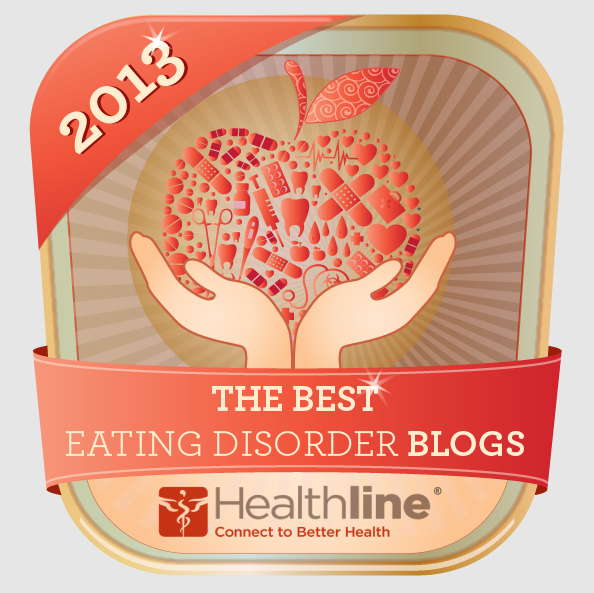Warning: Some articles may be triggering
Anorexia and Cheerleading: A Dangerous Combination
By Samantha Van Vleet
Anorexia, a very serious and life-threatening eating disorder, appears to occur more commonly among the aesthetic sports, such as figure skating, gymnastics and cheerleading.
A growing concern regarding anorexia has become evident in the cheerleading realm. In fact, Gymnastics Australia has banned cheerleaders from wearing uniforms that expose their stomach. This decision may have been led to by research conducted that suggested cheerleaders who bared their stomachs in uniform were at a greater risk for developing eating disorders.
What is anorexia?
Anorexia is commonly used to describe the eating disorder anorexia nervosa, characterized by excessive dieting and calorie restriction to the point of emaciation. Anorexia, although it prevents physical symptoms, is thought of as a psychological disorder as the underlying cause is usually emotional.
What are the symptoms of anorexia?
Cheerleaders suffering from anorexia are likely to exhibit incredibly odd eating habits and behaviors. A cheerleader may have lost substantial amounts of weight in a relatively short period of time and may over-exercise. Cheerleaders suffering from anorexia are also likely to suffer from hair, skin and nail issues, such as dry, flaky skin, discolored skin, hair loss and brittle purple fingernail beds. Additionally, a cheerleader may exhibit the signs and symptoms of depression and may seem preoccupied with her weight and size.
Read Cheerleading ED in full here.
Images of airbrushed fashion models should come with 'cigarette-packet' warning, says Norwegian minister
By Ian Sparks
Mail Online
Images of airbrushed fashion models should come with a ‘cigarette-packet’ style health warning in a bid to tackle eating disorders in teenage girls, a government minister in Norway has declared.
Advertisements of super-skinny models are causing young women to starve themselves to obtain ‘unobtainable ideal bodies’, equalities minister Audun Lysbakken said.
He has called for stark warnings on all posters and press adverts when a photo has been digitally altered.
One suggested text for the warning reads: 'This advertisement has been altered and presents an inaccurate image of how this model really looks.'
We have to reduce the pressure the beauty ideal generates.' The call comes after countries including Spain, Italy and Brazil have all clamped down on skinny models at catwalk shows.
Read Warning Label in full here.
My five-year bulimia nightmare, by Diane Keaton
Mail Online
Diane Keaton has spoken for the first time about her 'awful' five-year battle with bulimia.
The actress revealed that she used to gorge herself on huge tubs of ice cream before making herself sick.
She said she was a struggling actress when she was ordered to lose 10lb for a part in the original Broadway production of Hair in 1968. It was the beginning of her bulimia nightmare.
Miss Keaton, now 65, said that she did not think her condition was called bulimia at the time, but it was real for her. 'It was just this trick you could do,' she added. 'It's a horrible problem. Ugly and awful.'
After undergoing psychotherapy – what she called the 'talking cure' – she one day realized that she did not want to binge any more.
Miss Keaton – who dated a string of Hollywood stars including Woody Allen, Warren Beatty and Al Pacino but never married – claimed that she was not beautiful, even when she was younger.
'I was friendly looking, no Candy Bergen,' she said. 'The smile, maybe, was all I had.'
Her disclosures may surprise many as she is known for shunning the spotlight – Vanity Fair magazine once described her as 'the most reclusive star since Garbo'. But now she has written a memoir, Then Again, due out next week.
Read
Keaton in full here.
Vail health: Bulimia and the brain
Adolescent anorexia stems from both nurture and nature
Randy Wyrick
VAIL — Don't put your kid on a diet, because diets don't work, says Dr. Kenneth Weiner, an expert in eating disorders and brain development.
Within three years, 90 percent of people weigh more than they did before the diet. The other 10 percent have built lifestyle changes into their lives, Weiner said.
Weiner is co-founder, CEO and chief medical officer of the Eating Recovery Center in Denver and has been treating eating disorders for more than 25 years. He talked to Colorado School Counselors Association's annual conference at the Vail Cascade Resort & Spa on Friday.
To help adolescents avoid eating disorders, concentrate on who they are and not what they are, what's on the inside rather than what's on the outside, he said.
“We live in an obese society and childhood obesity is going to break the healthcare bank. My patients are the collateral damage,” Weiner said.
Nurture vs. nature
Eating disorders stem from nurture more than nature, he said, and so many things can feed that beast: Trauma, certain interests and hobbies, modeling, dancing, swimming, violence, culture, media.
“For many people with an eating disorder, it's preceded by some sort of trauma,” Weiner said.
Still, genetics play a role.
Between 40 to 50 percent of the risk is genetic. Fifty to 60 percent is psychosocial. If her mother has it, a girl is 12 times more likely.
It's as inheritable as schizophrenia or bipolar disorder, Weiner said, and it's treatable.
Read
Vail in full here.
10% OF GIRLS ARE FANS OF PRO-ANOREXIA WEBSITES
By Lucy Johnston and Chloe Randall
Express UK
ALARMING numbers of teenagers are using a network of underground “pro-anorexia” websites that glamorise and promote the life-threatening eating disorder.
New research reveals that more than 10 per cent of schoolgirls aged 13 to 17 have used a pro-anorexia site, and almost six per cent of boys, despite high-profile search engines blocking them after media outrage.
A Sunday Express investigation has discovered that many sites have gone underground, allowing access only to those who know a password.
Tips and tricks to reach a “goal weight” include eating cotton wool, inflicting pain to inhibit cravings and viewing pictures of skinny models, celebrities and other site users to boost motivation.
There are also suggestions on how to dupe family and friends that a meal has been eaten.
Websites may have trademark emblems with which followers demonstrate their dedication to an anorexic lifestyle, such as a red bracelet, worn by celebrity Nicole Richie and actress Lindsay Lohan in the past. Mary George, of eating disorder charity Beat, said: “These sites should act responsibly. Anorexia and bulimia are dangerous activities and people can be encouraged to copy them.”
Read 10% in full here.
Former child star to host eating disorders TV series
Former child star Tracey Gold is to share her experiences with anorexia as the host of a new U.S. reality show about eating disorders.
The actress, who battled the illness while starring in hit sitcom Growing Pains, will be seen working with patients undergoing intensive treatment for anorexia or bulimia as part of U.S. series Starving Secrets.
Gold admits shooting the show was an emotional rollercoaster, but she hopes it will give audiences an insight into the participants’ fear of gaining weight.
She tells The Daily Beast, “It’s not an easy show to watch, but it’s riveting and it really lets you know what it’s like. When we first started, every story tore me apart. I had such a close relationship to the subjects. As we got further along, I was able to get some distance.”
Read ED TV series in full here.
Anorexic Mum Fits into Seven-year-old Daughter’s Clothes
by Savitha.C.Muppala
A 26-year-old mum and her seven year old daughter look pretty much the same as the mother can easily fit into the daughter’s clothes.
Rebecca is extremely proud of the fact that she weighs just five stone and easily fits into the clothes meant for seven or eight year olds.
Rebecca has been a victim of anorexia for most part of her life. She recalls that it all began after she started putting on weight at the age of 13 following her parents’ divorce.
Read
Anorexic Mum in full here.
How do lesbians' and gay women experience anorexia and bulimia?
Health Canal
A psychology PhD student at UWE Bristol (University of the West of England) is researching lesbians' experiences of anorexia and bulimia and how these experiences may be similar to and different from those of heterosexual women.
The research involves in-depth interviews with self-identified lesbian women who are experiencing anorexia and/or bulimia.
Researcher Rebecca Jones said, “This new research will build on the pilot study I did at UWE Bristol as an undergraduate, which has just been published by the online journal Psychology and Sexuality.
“My motivations stem from having past experience of an eating disorder and self-identifying as a lesbian. When I started University I became interested in lesbians' eating disordered experiences from a research perspective which prompted me to explore the literature further in my undergraduate research project.”
According to Rebecca, there is now a considerable body of research exploring how our culture's norms and ideas about gender impact upon girls' and women's experiences of anorexia and bulimia and heterosexual girls' and women's experiences of anorexia and bulimia.
“However,” she says, “much less is known about lesbian experiences of anorexia and bulimia. The article I have just published explores some of the similarities and differences between lesbian and heterosexual women's experiences of anorexia and/or bulimia. Analysing interviews with a small number of self-identified lesbian women with a history of anorexia and/or bulimia indicates that many of the ways in which these women described their eating disorders were similar to those identified in research with girls and women assumed to be heterosexual – such as a search for identity, an exertion of self-control, and a pursuit of feminine beauty.
Read Experience Anorexia and Bulimia in full here.
Teens who eat with parents less likely to be depressed
By Simon Collins
Kiwi teenagers who eat meals with Mum and Dad are less likely to be depressed and much less likely to be suicidal, a new study has found.
Teenagers who eat with their families frequently are also less likely to binge drink, smoke cigarettes or cannabis or use inconsistent contraception.
They are more likely to eat fruit and vegetables and less likely to eat fast food. But, apparently because of other lifestyle factors, they are just as likely to be overweight.
The study, published today by the Families Commission, is based on Auckland University's Youth 2007 survey of 9100 New Zealand high school students. Previous reports have shown that the teens were happier, less likely to be depressed, had better nutrition and were more physically active than in a similar survey in 2001.
The first survey did not ask about family meals, but the latest one found that 24 per cent of teens ate meals with all or most of their family less than three times in the previous week.
The other three-quarters ate meals with the family three to six times a week (41 per cent) or at least seven times a week (35 per cent).
Read
Eat With Parents in full here.



 0
comments
0
comments




















